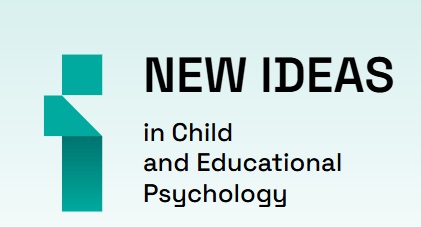Article
Arestova O.N., Osipiyan G.A., Vzorin G.D., Malinovskaya I.V., Maslova M.V. (2020). Quality of life dynamics connected with visual function disorders and surgery treatment results. Vestnik Moskovskogo Universiteta. Seriya 14. Psikhologiya [Moscow University Psychology Bulletin]. 1, pp. 55-76.
Abstract
Relevance. Studies of Quality of Life (QOL) are among the most topical concerns for both psychological and medical research. Although there are many studies abroad, very few have been done in Russia, and with regard to QOL in relation to vision problems they are practically non-existent.
Objectives:
-
To develop a Russian-language questionnaire for QOL in relation to vision disorders and the results of their treatment.
-
To measure the relationship among a priori subjective estimations of visual function, expectations of treatment results, and estimations of treatment effects.
Method. A pilot investigation was conducted using a questionnaire that we devised for QOL in relation to vision impairment. It included three informational blocks: The first was devoted to a priori estimations of visual problems; the second integrated the patient’s expectations concerning different effects of treatment, and the last estimated the treatment results. Nineteen patients with keratoconus took part in the research.
Results.The diagnostic value of the method we developed was empirically confirmed. Ways to fine-tune it to the level of a standardized questionnaire were identified. The comparisons among a priori subjective estimations of visual function, expectations of treatment results, and estimations of treatment effects make it possible to describe the dynamics of QOL. It was shown that subjective estimations of vision are nor related to the objective quality of vision and are probably determined by personality characteristics. Respondents’ treatment results expectations were found to be quite generalized. There are some differences between expectations and estimations of treatment effects: The respondents usually a priori overvalued the instrumental results of the treatment and underestimated the personality-oriented ones.
Conclusions.
-
The questionnaire could be used for QOL investigations. This method could be widely used after appropriate standardization procedures are introduced.
-
Subjective estimations of visual function are not related to the objective quality of vision and are probably determined by personality characteristics.
- Among the most significant effects of treatment, even though underestimated a priori by the patients, concerned the following aspects of QOL: a positive future-time perspective, life planning, emotional status, and self-conception.
Sections: Methodology of psychology;
Received: 11/19/2019Accepted: 01/22/2020
Pages: 55-76
DOI: 10.11621/vsp.2020.01.04
Keywords: quality of life; visual function; subjective estimations; objective treatment results; quality of life development;
Available Online 25.03.2020
References
Zdorov'e-21. Health for all policy framework for the WHO European Region. Evropeiskaya seriya po dostizheniyu zdorov'yadlya vsekh. (European Series on Health for All), 1999, 6, 293. (in Russ.).
Clinical Psychology: Encyclopedic Dictionary. Curd cheese. (2nd ed.). In N.D. Tvorogovoi. Moscow: Prakticheskaya meditsina, 2016. (in Russ.).
Kovyneva O.A. (2006). The structure of quality of life and factors for its improvement. Ekonomika zdravookhraneniya (Health Economics), 8, 48–50. (in Russ.).
Kokin S.A. (2015). Kliniko-funktsional'naya otsenka optimizirovannogo metoda dostizheniya prognoziruemoi anizometropii pri korrektsii afakii monofokal'nymi intraokulyarnymi linzami: Diss. ...kand. med. nauk. (Clinical and functional evaluation of an optimized method for achieving predicted anisometropia in the correction of aphakia with monofocal intraocular lenses: Ph.D. (Psychology). Moscow. (in Russ.)
Kochyunas R. (1999). Fundamentals of psychological counseling. Moscow: Akademicheskii proekt. (in Russ.).
Lapin I.P. (2001). Personality and medicine. Introduction to the psychology of pharmacotherapy. Saint Petersburg: Dean. (in Russ.).
Mochalova A.S. (2014). Kachestvo zhizni patsientov pri razlichnykh variantakh lecheniya melanomy khorioidei: Dissertatsiya … kand. med. nauk. (Quality of life of patients with various treatment options for choroid melanoma: Ph.D. (Psychology). Chelyabinsk. (in Russ.).
Novik A.A., Ionova T.I. (2002). Guide to the study of quality of life in medicine. Saint Petersburg.: Izdatel'skii dom «Neva». (in Russ.).
Sidorov P.I., Parnyakova L.V. (2000). Introduction to Clinical Psychology: Issue 2. Textbook for medical students. Moscow: Akademicheskii proekt. (in Russ.).
Tat'kova A.Yu. Chechel'nitskaya S.M., Rumyantseva A.G. (2008). To the question of the methodology for assessing the quality of life determined by health. Problemy sotsial'noi gigieny, zdravookhraneniya i istorii meditsiny(Problems of Social Hygiene, Health Care and the History of Medicine),6, 46–61. (in Russ.).
Sheludchenko V.M., Osipyan G.Kh., Yusef N.Yu., Khraistin Kh., Alkharki A., Dzhalili R.A. (2019). Bandage treatment-optical keratoplasty in the treatment of iatrogenic keratectasia. Vestnik oftal'mologii (Bulletin of Ophthalmology),5, 171–176. (in Russ.).
Abbey A., Andrews A. (1985). Modelling the Psychological Determinants of Life Quality. Social Indicator Research,16 (1), 1–34.
Bradburn N.M., Caplovitz D.(1965). Report on Happiness. A pilot Study of Behavior Related to Mental Health. Chicago: Aldine Pub. Co.
TerweeC.B., Dekker F.W., Prummel M.F., Wiersinga W.M. Graves'(2001).Ophthalmopathy through the eyes of the patient: A state of the art on health-related quality of life assessment. Orbit, 4, 281–290.
Kymes S.M., Walline J.J. Zadnik K., Sterling J., Gordon M.O. (2008).Changes in the Quality of Life of Patients with Keratoconus. American Journal of Ophthalmology, 4, 611–617.
Lee P.P., Spitzer K.A., Hays R.D. (1997).The impact of blurred vision on functioning and well-being. Ophtalmology, 104, 3, 390–396.
McAkinden C., Kbadka J., Paranbos J.S.F., Scbor P., Pesudovs K.(2012). Psychometric Properties of the NEI-RQL-42 Questionnaire in Keratoconus. Investigative Ophthalmology & Visual Science, 53, 11, 7370–7374.
Medical outcomes Study: 36-Item Short Form Survey Instrument (SF-36). Rand Corporation. https://www.rand.org/health-care/surveys_tools/mos/36-item-short-form.html(date of retrieval 01.10.2019)
Orr P., Rentz A., Margolis M., Revicki D., Dolan C.M., Colman S., Fine J.T., BresslerN.M. (2011). Validation of the National Eye Institute Visual Function Questionnaire-25 (NEI VFQ-25) in Age-Related Macular Degeneration. Investigative Ophthalmology & Visual Science, 52, 3354–3359.
Bergner M, Bobbitt RA, Pollard WE, Martin DP, Gilson BS. (1976). The sickness impact profile: validation of a health status measure. Med Care, 1, 57–67.
Wong M., Fenwick E., Tee Aw A., Lamoureux E., Seah L.L (2018). Development andValidation of the Singapore Thyroid Eye Disease Quality of Life Questionnaire.Trans Vis. Science Tech, 7, 5, 1–9.
For citing this article:
Arestova O.N., Osipiyan G.A., Vzorin G.D., Malinovskaya I.V., Maslova M.V. (2020). Quality of life dynamics connected with visual function disorders and surgery treatment results. Vestnik Moskovskogo Universiteta. Seriya 14. Psikhologiya [Moscow University Psychology Bulletin]. 1, pp. 55-76.









